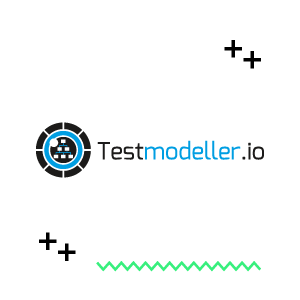DevOps merges operational and development teams to boost the speed of software development and ensure that the final product is delivered as clean and consistent as possible. Ultimately, DevOps allows teams to increase product quality and speed of delivery in even the most highly competitive environments.
The idea of weaving together disparate teams to accelerate development might appeal to many organizations, but some common challenges may come up before implementing a DevOps environment.
Let’s jump in and explore the core principles of DevOps and some best practices and tips so you can avoid common pitfalls and implement DevOps with ease.
What is DevOps?
The concepts behind DevOps are not truly new, and represent an evolution of Agile development. Communication, collaboration, and integration – as well as rapid iteration – are all rallying cries for DevOps practitioners. This nonlinear methodology for project development and management may have its roots in Agile, but also brings the role of continuous testing to the forefront.
Agile projects held onto a portion of the waterfall development and deployment model by shifting some or all of the user testing towards the end of the cycle.
DevOps, on the other hand, ensures that each stage of development is fully tested before being shipped to production – in theory, presenting a more polished product to users in a shorter time frame. Shifting extensive testing earlier in the process helps reduce the risk of lack of user acceptance too.
One of the key challenges involved with restructuring for a DevOps environment could be significant cultural change as well as shifts in the development and operations teams within your technology staff.
How to get started with DevOps
Putting DevOps in place with existing infrastructure requires a firm commitment on both leadership and individual team members to stick within the framework. IT developers and operational associates must understand the required user experience so they can ensure that the resulting software meets user’s needs.
The makeup of your team could shape differently depending on the scale of your organization, but often includes developers, testers and system administrators. These multi-talented individuals all need to understand DevOps and maintain a deep level of trust with the other members of the team. Trust and collaboration allows the group to move efficiently as a whole, in order to maintain consistent standards across the organization.
DevOps Principles
To meet the demanding needs of customers with DevOps, you need to stay highly engaged with customers and the business environment in order to translate these insights into technology standards. Teams are expected to continuously innovate while still maintaining high-quality standards of code cleanliness and delivery times.
These key DevOps principles help you build a solid start:
- All team development activity should result in customer-centric action.
- Software is created with the end-use in mind.
- Teams must agree that they have end-to-end responsibility for their projects.
- Successful teams have a balanced set of skills, resulting in autonomous, cross-functional teams
- Experimentation is extremely important, resulting in challenging questions and continuous improvement
- IT operations should be optimized to automate everything you can
With the need for continuous testing and review, automation becomes a vital component of highly functional DevOps teams. DevOps core principles, combined with the below best practices, offer your team a roadmap for entering into the DevOps world.
DevOps Best Practices
DevOps requires teams to participate in deeper – and often more difficult – conversations that can become uncomfortable. The ultimate outcome is to enhance how teams work together and move forward more swiftly and accurately than ever before.
These DevOps best practices go across the spectrum of the project, from upfront communication to continuous delivery and automation.
- Gain the active participation of stakeholders as an early opportunity for the team to successfully drive change.
- Automate testing to allow developers and testers to test code early and often.
- Introduce change management at each stage, bringing enterprise-level issues to the forefront of a broader audience.
- Create system-wide structures for configuration management that consolidate operations and add visibility to IT leaders.
- Define integrated deployment best-practices and ensure they are used throughout the internal and external development community.
- Ensure users have access to development support once new builds are released.
- Regularly update code repositories, ensuring that updates receive continuous integration into the workflow.
- Take advantage of continuous deployment tools to ensure new features are quickly brought to the organization. (Xray integrates with CI tools like Jenkins, GitLab and Team City that give the whole team visibility into test automation)
- Build, release and test code more quickly – while offering significant value to the organization – with continuous delivery.
- Automate dashboards to allow all team members and leadership to quickly identify bottlenecks and dive deeper into any roadblocks. (Jira and Xray dashboards show you key Quality metrics like requirements traceability, requirements coverage, and overall test coverage)
- Ensure applications have adequate monitoring, often automated, that allows teams to proactively identify difficulties with production code.
As you can see, automation plays a large part in ensuring that DevOps teams are successful in creating usable and clean code which quickly adds value back to the organization.
DevOps tips
One of the key benefits of DevOps is that the structure allows organizations a greater transparency into their people, processes, and automation – often identifying areas where communication lags or there’s a lack of consistency. Developing into a true DevOps organization requires a significant personal investment on the part of leadership and a long-term commitment to excellence throughout the organization.
Maintaining this strict structure also requires working with vendors who support working in a true DevOps environment, as it can be more challenging to interact between DevOps and Agile teams.
Get started with DevOps
One of the key principles of DevOps is “test early, test often,” which is why automation plays a major role in the success of this approach in your organization. Apps like Xray and Jira connect and integrate your development and testing teams under one toolset that allow you to accelerate development without sacrificing quality.
Xray and Jira provide a truly flexible platform for implementing your DevOps best practices throughout the organization. Take the DevOps core principles, combined with these best practices, and jump into the world of DevOps.
Author Bio
Brittney Parker has always been interested in software, databases, and expanding her education of all things technical. She has taken numerous coding boot camps and development workshops to further her education in the tech space. Brittney is a writer for Girls Write Tech, which specializes in technical writing content and aims to encourage more female developers to share their knowledge.





